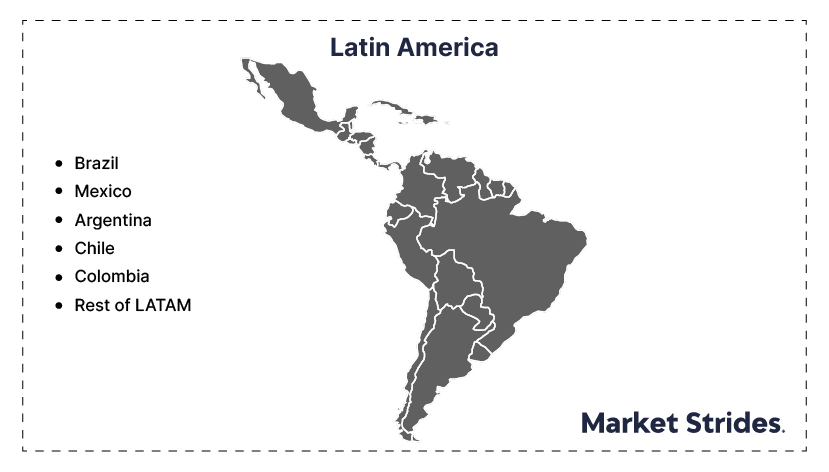The Latin America Hepatitis B immunoglobulin market size is expected to grow at a CAGR of 3.87% during the forecast period (2025–2033). Hepatitis B remains a public health concern in Latin America, with millions of people at risk of chronic infection. The demand for Hepatitis B Immunoglobulin (HBIG) is increasing as a post-exposure prophylaxis (PEP) measure, especially for newborns of infected mothers and healthcare workers exposed to contaminated blood.
Hepatitis B Immunoglobulin (HBIG) refers to a specialized antibody solution used for passive immunity against the hepatitis B virus (HBV). It is primarily administered as a post-exposure prophylaxis (PEP) to individuals at high risk of infection, including newborns of HBV-positive mothers, healthcare workers exposed to infected blood, and organ transplant recipients. In Latin America, the use of HBIG is increasing due to rising HBV infection rates, government-led immunization programs, and expanded healthcare access. It plays a crucial role in preventing mother-to-child transmission (PMTCT) and reducing HBV-related complications, particularly in countries with higher HBV prevalence.
Growing awareness and vaccination programs are key drivers of the market. Governments and health organizations are actively promoting vaccination and post-exposure prophylaxis to reduce Hepatitis B transmission.
Moreover, the Pan American Health Organization (PAHO) has also been instrumental in supporting regional immunization initiatives. As awareness rises, more healthcare providers recommend immunoglobulin therapy for at-risk individuals, boosting market growth and ensuring better disease control across Latin America.
Limited availability and supply chain challenges hinder the growth of the market. The region relies heavily on plasma donations, which fluctuate due to regulatory constraints and donor shortages. Countries like Argentina and Mexico face delays in plasma collection and fractionation, leading to inconsistent immunoglobulin supply. Moreover, logistical issues, such as cold chain storage and transportation inefficiencies, further restrict product availability in remote areas. Import dependency also makes the market vulnerable to global supply disruptions.
The market presents significant opportunities through strategic partnerships and regional expansions. With an increasing focus on enhancing blood safety and immunoglobulin production, collaborations between biotech firms and local healthcare organizations are gaining traction.
Such collaborations facilitate technology transfer and improve access to high-quality immunoglobulin therapies. Moreover, investments in local manufacturing and distribution networks are expected to strengthen the market, catering to the growing demand for Hepatitis B immunoglobulin across Latin America.
| ATTRIBUTES | DETAILS |
|---|---|
| Study Period | 2021-2033 |
| Historical Year | 2021-2024 |
| Forecast Period | 2025-2033 |
| By Product Type |
|
| By Application |
|
| By End-User |
|
| Regional Insights |
|
Intravenous Hepatitis B Immunoglobulin (HBIG) dominates the market due to its rapid and effective immune response, particularly in high-risk patients such as liver transplant recipients and newborns of infected mothers. Hospitals and specialized clinics prefer intravenous administration for its immediate bioavailability and consistent dosing. Moreover, advancements in intravenous immunoglobulin (IVIG) formulations have improved patient outcomes, further driving demand. The increasing adoption of hospital-based treatments and rising hepatitis B prevalence contribute to this segment’s dominance.
Prophylaxis is the leading application segment in the market, driven by widespread vaccination programs and preventive healthcare measures. HBIG is commonly used for post-exposure prophylaxis in newborns and individuals exposed to the hepatitis B virus. Governments and healthcare organizations emphasize prevention over treatment to reduce long-term healthcare costs. Growing awareness, coupled with mandatory hepatitis B immunization policies, strengthens the dominance of this segment in the region’s immunoglobulin market.
Hospitals are the dominant end-user in the Latin American Hepatitis B Immunoglobulin market, primarily due to their access to advanced healthcare infrastructure and specialized medical professionals. Hospitals handle a high volume of hepatitis B cases, including post-liver transplant patients requiring immunoglobulin therapy. Moreover, government-funded healthcare programs often distribute HBIG through hospital networks, ensuring widespread availability. The preference for hospital-based care over outpatient settings further reinforces the leadership of this segment in the market.
Latin America presents a growing market for Hepatitis B Immunoglobulin, driven by improving healthcare infrastructure, raising awareness, and increasing medical tourism. Countries like Brazil, Mexico, and Argentina are leading in healthcare advancements, ensuring better access to immunoglobulin therapy.
Similarly, Brazil’s extensive public health initiatives, such as the National Immunization Program (PNI), have improved Hepatitis B prevention efforts, boosting demand for immunoglobulin, especially among newborns and transplant patients.
In the Dominican Republic, which ranks 19th globally and second in Latin America in the medical tourism sector, private hospitals are expanding their immunology services to meet the needs of international patients. Likewise, Argentina has ramped up plasma collection programs to reduce reliance on imported immunoglobulin products, ensuring a more stable supply.
With increasing government efforts and private sector investments, the region is expected to witness a steady market share, providing better access to life-saving immunoglobulin therapy for Hepatitis B patients.

Request Table of Contents (TOC), Please Fill below form



